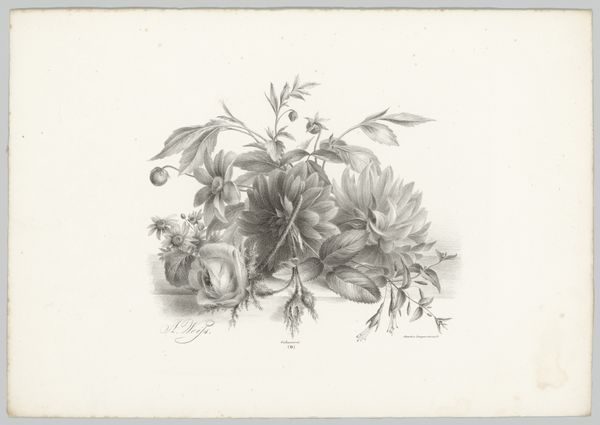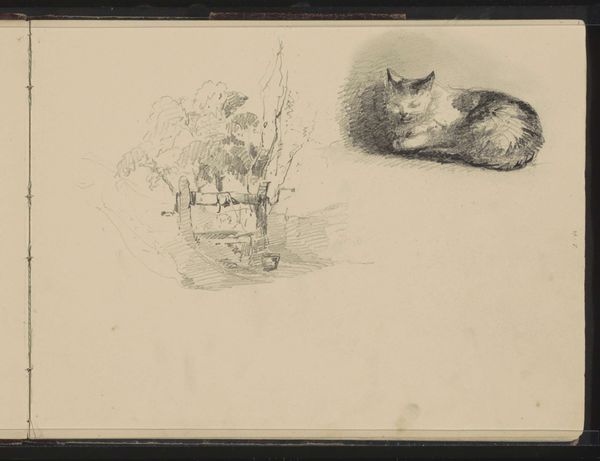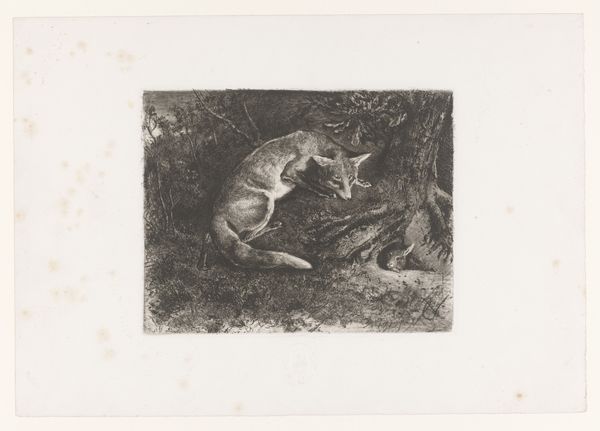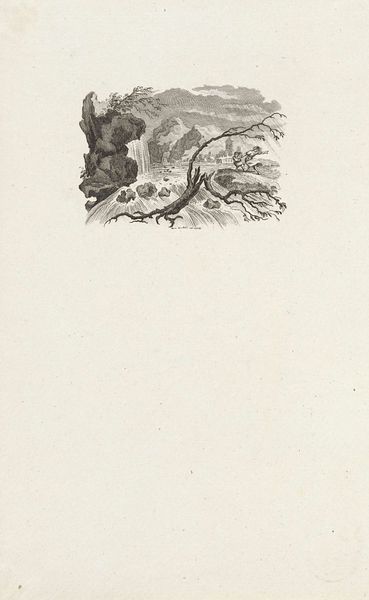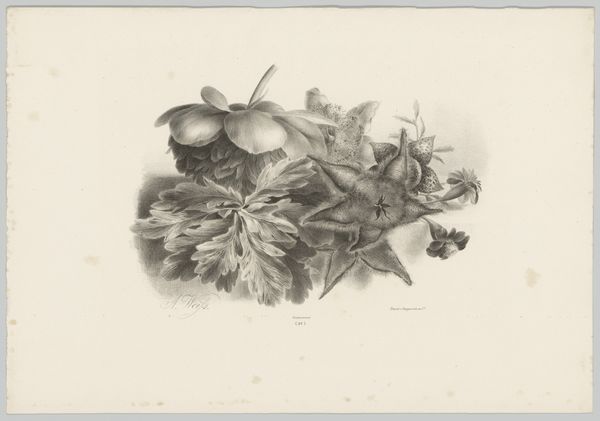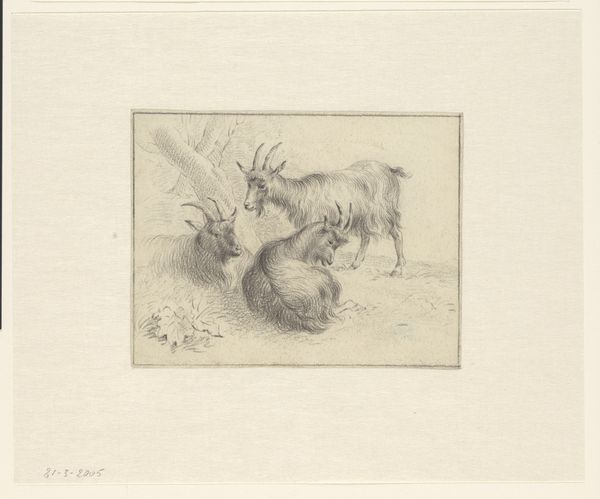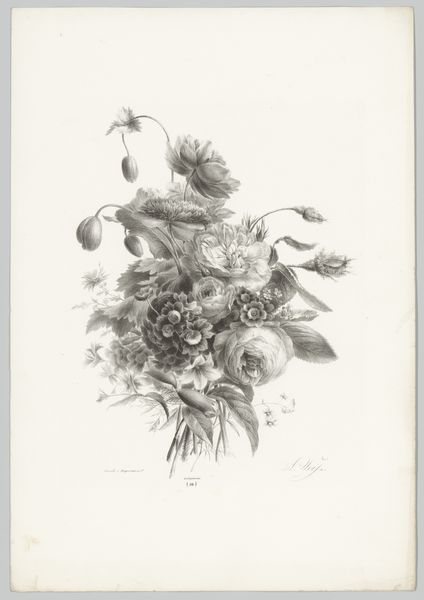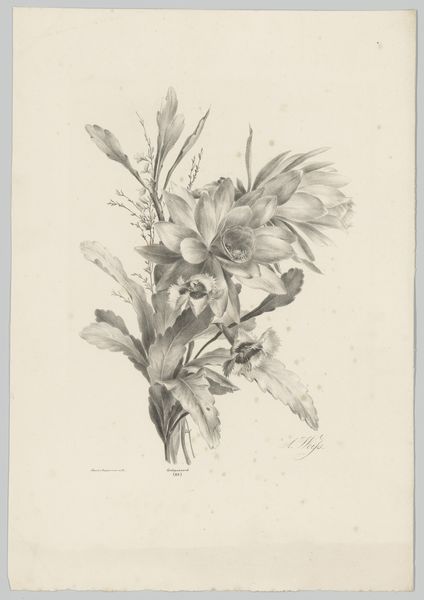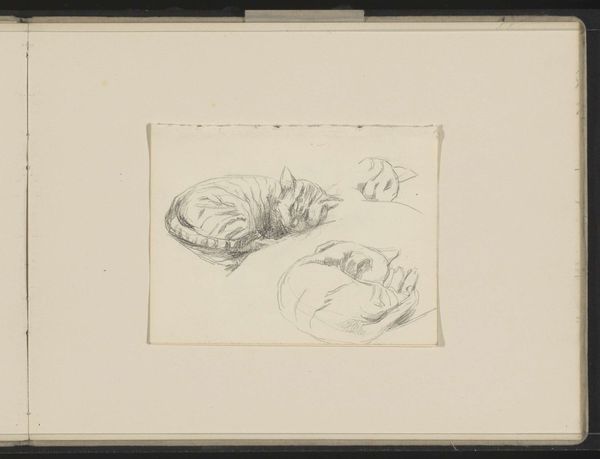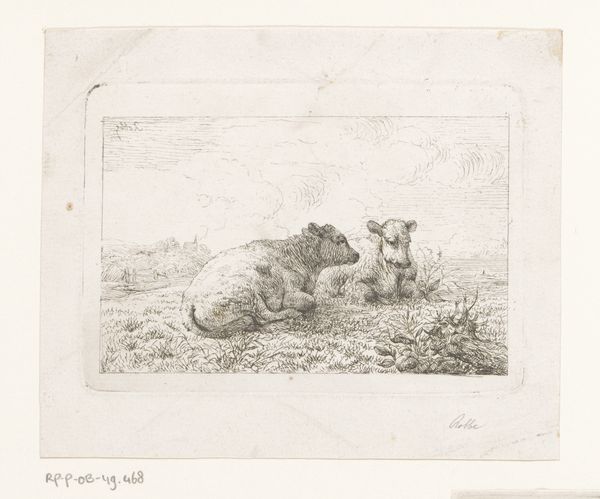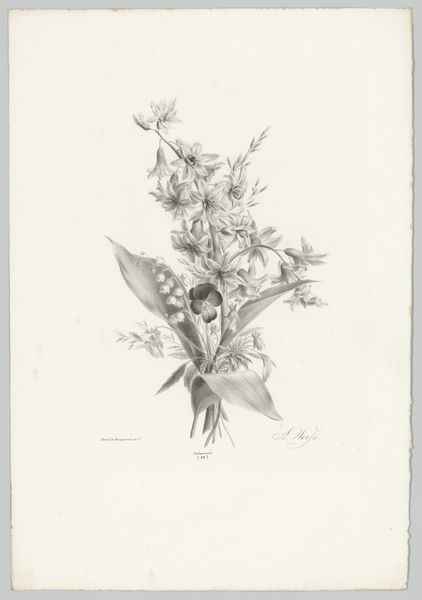
drawing, graphite
#
drawing
#
romanticism
#
graphite
#
naturalism
Dimensions: height 291 mm, width 427 mm
Copyright: Rijks Museum: Open Domain
Editor: So this drawing, "Roses, Lilies, Bell-shaped Flowers and Butterfly" by Anton Weiss, dates from 1836 and is rendered in graphite. There's something almost photographic about its realism. What stands out to you when you look at this? Curator: Immediately, the artist’s skill in rendering different textures catches my attention. Consider the velvety rose petals juxtaposed with the smooth lilies, then those prickly, burr-like flowers in the background. Weiss has meticulously documented these differences through graphite; this wasn't just about depicting beauty, but also about studying botanical structures through representational labor. What do you make of the starkness of the graphite as a medium, particularly in contrast to the natural forms it depicts? Editor: It's interesting to think about. It’s almost as if the artist is dissecting nature, presenting it for scientific examination rather than pure aesthetic appreciation. Curator: Precisely! Look at the composition – how these flowers are arranged on what appears to be a plinth. It almost transforms this still life into a display, raising questions about the consumption and commodification of nature during this era. Is it simply a study of forms, or a quiet commentary on how nature is transformed when rendered in art? And also the amount of time spent creating a likeness to it? Editor: I hadn't considered that aspect. It makes me think about the relationship between art, science, and the burgeoning industrial revolution. Perhaps the very act of drawing in such detail was a way of trying to hold onto nature in a rapidly changing world? Curator: That's a valuable connection to make. This detailed rendering transforms labor into art. By giving natural form a visual life that goes on beyond its temporal existence, we must recognize it is inherently tied to materiality and artistic practice. I am also noticing its connections with romanticism by creating and capturing intense sensory experience. What can you now derive from naturalism meeting romanticism, with materialism as a key point of focus? Editor: Looking at it that way, it definitely shifts my perception from just appreciating its beauty to questioning its place within broader societal changes. Thanks for that insight. Curator: My pleasure. Considering the materiality helps us consider the art objects' complex relationship between maker and society, artist and technology.
Comments
No comments
Be the first to comment and join the conversation on the ultimate creative platform.
